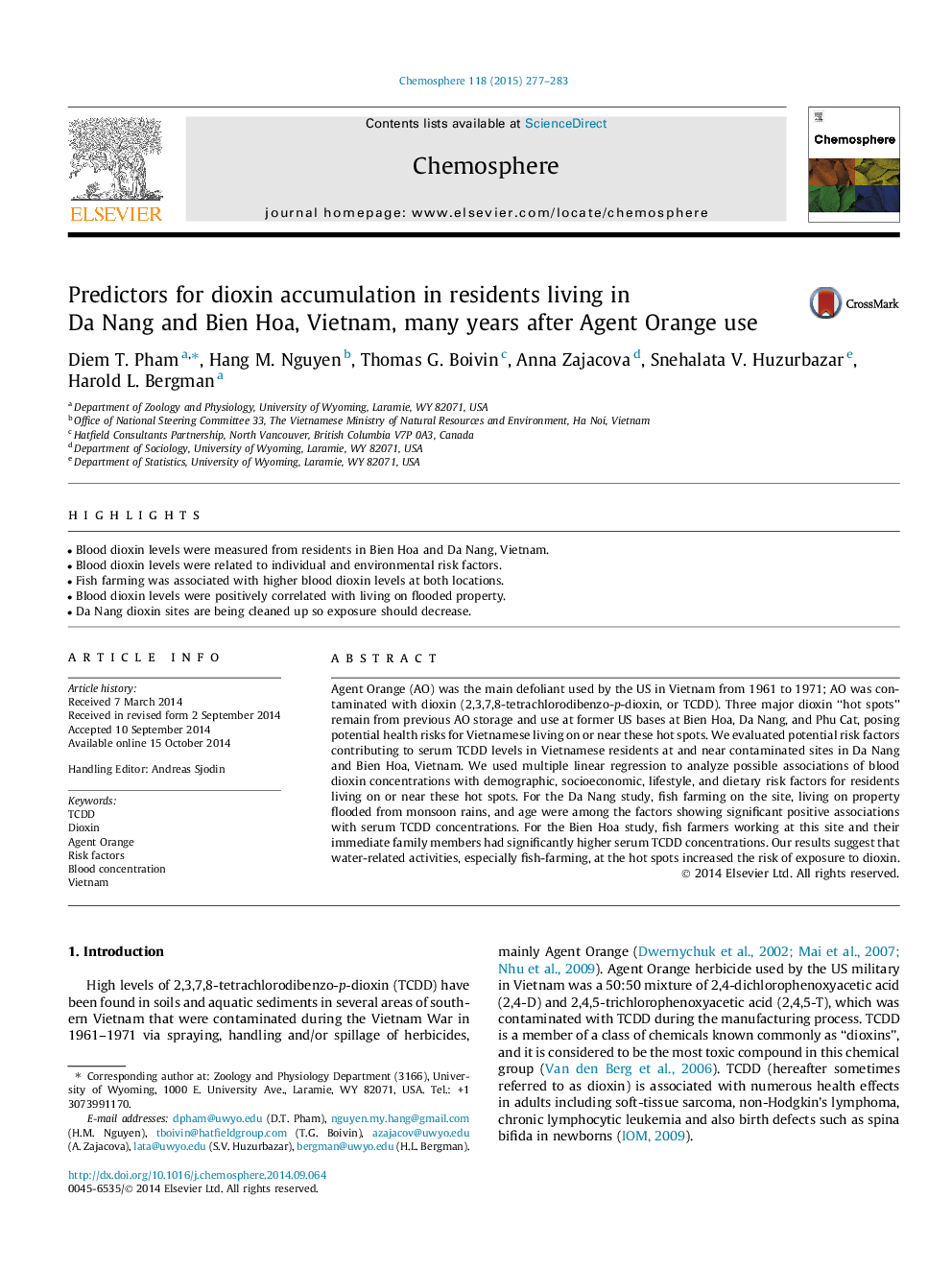| Article ID | Journal | Published Year | Pages | File Type |
|---|---|---|---|---|
| 6308375 | Chemosphere | 2015 | 7 Pages |
Abstract
Agent Orange (AO) was the main defoliant used by the US in Vietnam from 1961 to 1971; AO was contaminated with dioxin (2,3,7,8-tetrachlorodibenzo-p-dioxin, or TCDD). Three major dioxin “hot spots” remain from previous AO storage and use at former US bases at Bien Hoa, Da Nang, and Phu Cat, posing potential health risks for Vietnamese living on or near these hot spots. We evaluated potential risk factors contributing to serum TCDD levels in Vietnamese residents at and near contaminated sites in Da Nang and Bien Hoa, Vietnam. We used multiple linear regression to analyze possible associations of blood dioxin concentrations with demographic, socioeconomic, lifestyle, and dietary risk factors for residents living on or near these hot spots. For the Da Nang study, fish farming on the site, living on property flooded from monsoon rains, and age were among the factors showing significant positive associations with serum TCDD concentrations. For the Bien Hoa study, fish farmers working at this site and their immediate family members had significantly higher serum TCDD concentrations. Our results suggest that water-related activities, especially fish-farming, at the hot spots increased the risk of exposure to dioxin.
Related Topics
Life Sciences
Environmental Science
Environmental Chemistry
Authors
Diem T. Pham, Hang M. Nguyen, Thomas G. Boivin, Anna Zajacova, Snehalata V. Huzurbazar, Harold L. Bergman,
